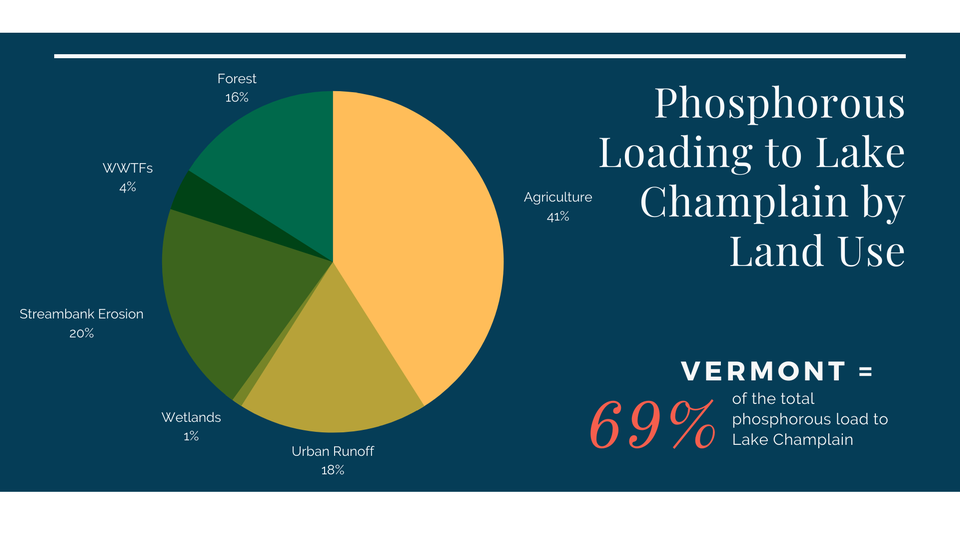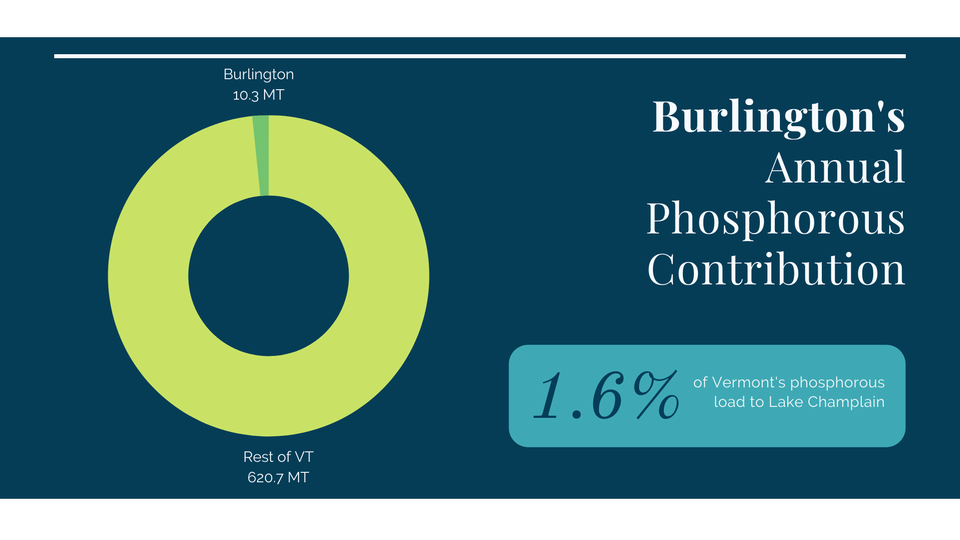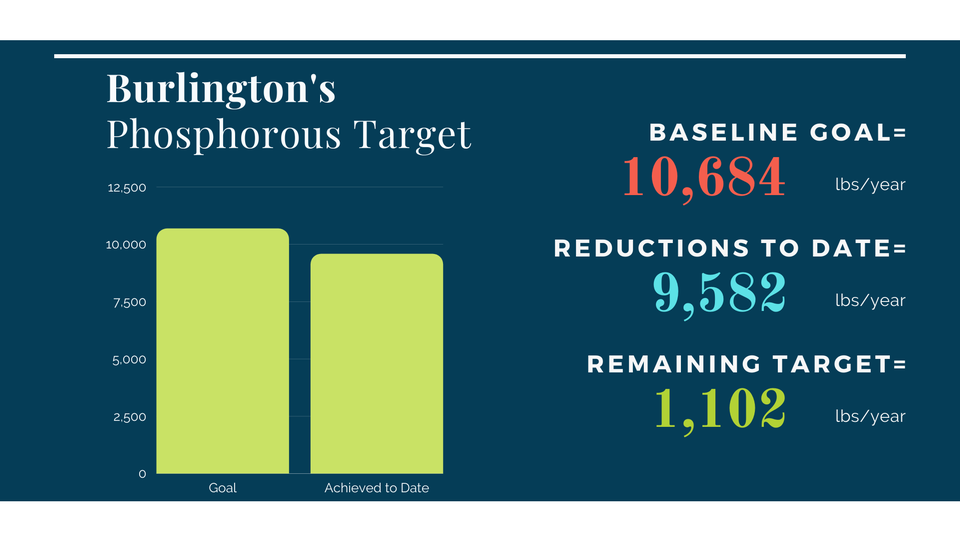Operation Clean Sweep Runs April 24 - May 2. Cars must be off-street on your night of sweeping.
Visit Clean Sweep for more details.
Operation Clean Sweep Runs April 24 - May 2. Cars must be off-street on your night of sweeping.
Visit Clean Sweep for more details.
Every few years, the Lake Champlain Basin Program issues their State of the Lake Report to inform citizens and resources managers about the health of the lake. A substantial amount of data has been collected over the last few decades on the state of water quality in Lake Champlain. While there are a variety of pollutants of concern, however the primary focus of current improvement efforts is phosphorous (P).
Phosphorous is a nutrient that, when overabundant, can severely impact aquatic ecosystems in lakes and ponds. Cyanobacteria (sometimes referred to as "blue-green algae') thrive on excess phosphorous - especially in shallow, warm bays during calm conditions. Unfortunately, these are also the areas where people commonly gather for swimming, fishing, and other summer activities.
Phosphorous comes from a number of sources - and Lake Champlain receives phosphorous loads from New York, Quebec, and Vermont. Of the three, Vermont is responsible for the largest contribution of phosphorous, at around 630 Metric Tons per year. Phosphorous enters the Lake from Vermont from the following sources:
Putting Burlington in context, the City is directly responsible for approximately 10.3 Metric Tons of phosphorous each year from lands they own and control.

The Lake Champlain Total Maximum Daily Load (TMDL) was issued by the EPA and Vermont DEC in 2016, and established the phosphorous reductions necessary for each sector to acheive the water quality standard for phosphorous in Lake Champlain. Municipalities like Burlington were allocated a specific number of pounds of phosphorous they could discharge annually - also referred to as a wasteload allocation (WLA).
Technical analyses showed that Burlington needed to reach a goal of 10,684 pounds of phosphorous each year in order to meet the TMDL requirements. This analysis was based on modeling conducted between 2000 and 2010. Additional modeling and analysis of the projects Burlington has implemented since 2010 showed that the City had already made significant progress toward this goal. However, the City still needs to address approximately 1,100 pounds of phosphorous annually to meet our WLA.
